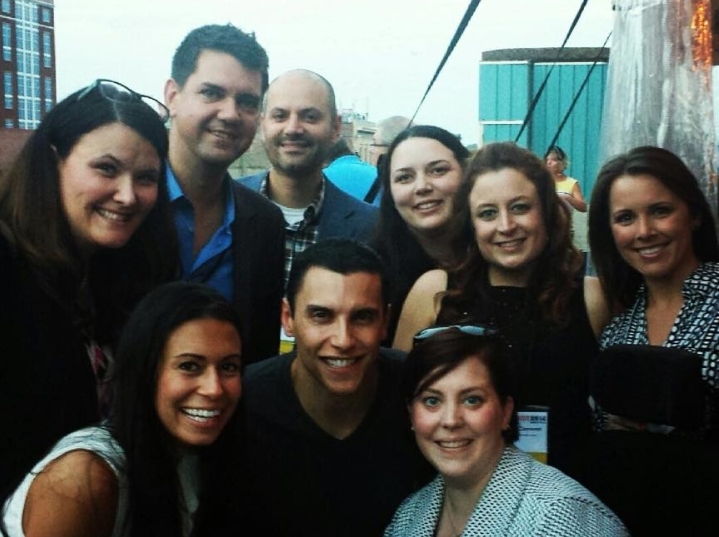By Christine Calvin
Metro EDGE Regional Action Committee Chair
Editor In Chief, Comstock's Magazine

Metro EDGE members, including Christine Calvin (left), on the Metro Chamber Study Mission to Nashville.
Nearly 100 participants in this year’s Metro Chamber Study Mission recently returned from a week in Music City. We met the city’s leaders, toured its finest civic attractions and ate our body weight in hot buttered biscuits and all things fried. My takeaway from this year’s trip to Nashville was to tune into history and present-day scenarios to avoid costly mistakes or missed opportunities as we build our city’s sports and entertainment infrastructure and revitalize Sacramento.
The similarities between Nashville and Sacramento were in many ways obvious. Fifteen years ago, Nashville’s downtown core was rundown. Citizens lacked a fervent passion for their communities. The little riverside metropolis known for Loretta, Minnie, Johnny and Dolly had lost its luster and its visitors.
But the atmosphere of Nashville began to shift in 1996 when Bridgestone Arena, home of the NHL’s Predators, was built smack dab in the middle of the city. Just three years later, the city built LP Field for the NFL's Tennessee Titans and the Tennessee State University Tigers. A third venue, Tennessee Park, home of the new Oakland A’s Triple-A affiliate Nashville Sounds, will open next spring.
The impacts — both positive and negative — are obvious.
Employee attraction and retention has spiked, graduates of the city’s universities and colleges are finding local jobs, big corporations have opened headquarters, and new small businesses are launching with fervor. The city has 46 young-professionals organizations. More than 56 major health care companies (public and private) have chosen Nashville as their home, and seven of the nation’s 12 leading for-profit acute care hospital companies are located in Nashville.
Meanwhile, gentrification is driving up rents and causing an affordable-housing drought, and significant pockets of poverty remain. Nearly half of the renters in Nashville spend more than 30 percent of their income on housing costs, according to the Metropolitan Government of Nashville and Davidson County. Six districts in East and North Nashville have poverty rates above 30 percent, which is almost twice the national rate.
During six Uber rides in the city, I asked each driver about how they came to live in Nashville, what they liked about it and what they perceived as the problems and opportunities. Trouble with traffic was the topic that came up time and again.
Nashville looks quite like Sacramento on a map — a compact urban grid encircled by water and freeways. When Bridgestone Arena and LP Field (located on either side of the river and in walking distance from one another) welcome or release sports fans and concertgoers at the same time of day, freeways and surface streets groan under the weight of 90,000 event attendees. Event capacity will increase to 100,000 when the baseball field opens next year.
The traffic swamps the police department and event security firms, confuses taxi drivers and rideshare providers, frustrates residents and overwhelms public transportation, which, as in Sacramento, is limited in variety and scope.
I’m concerned that we’ve been preoccupied with the parking conversations surrounding the areana and (understandably) zealous about building a soccer stadium in the railyards. It’s entirely possible that we are grossly underestimating the impending traffic congestion. In response, I encourage young professionals to get serious about their involvement in the development of public transportation projects. The cars are coming, and if you can stay out of one on game night, your downtown experience will be much more enjoyable.

